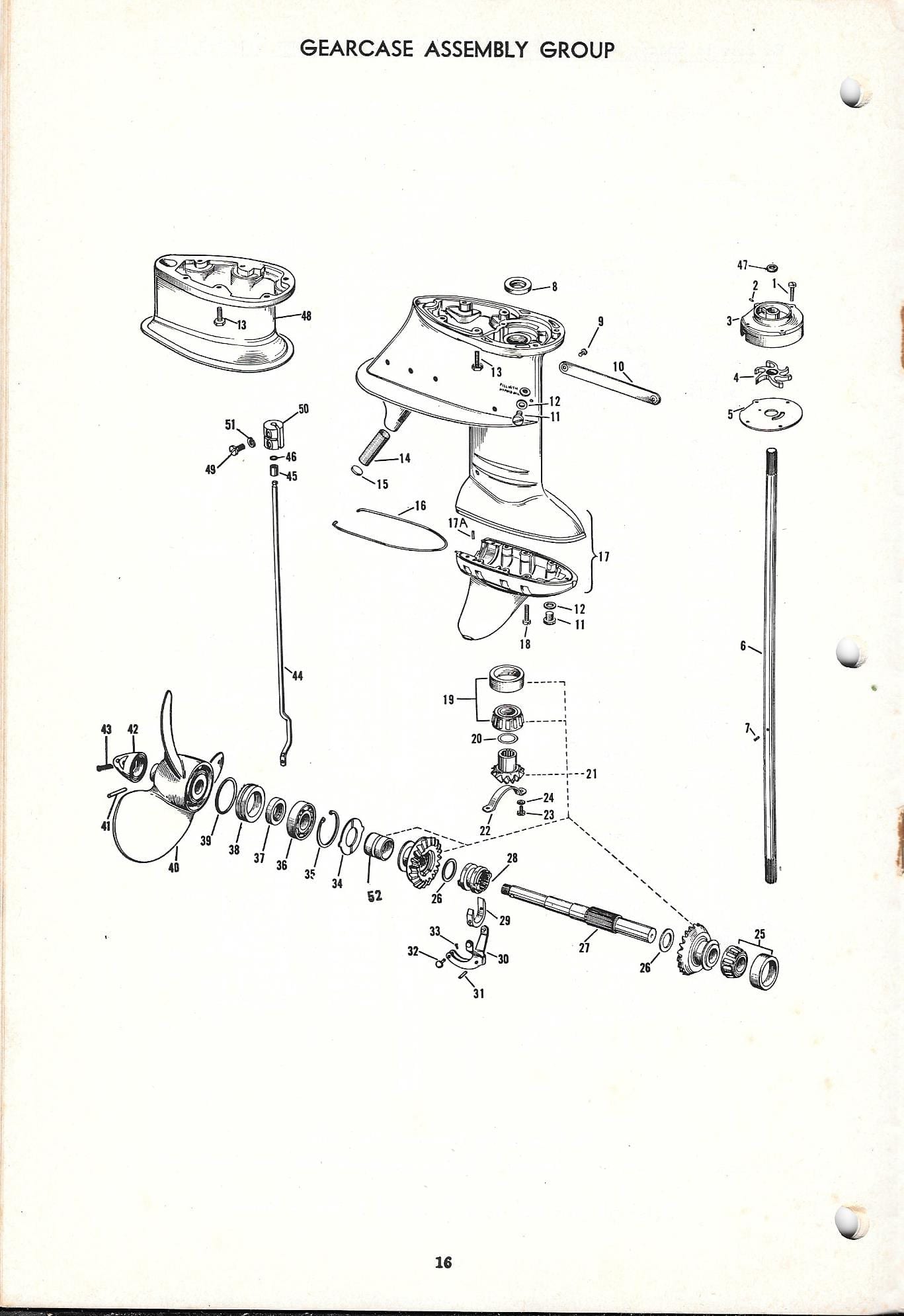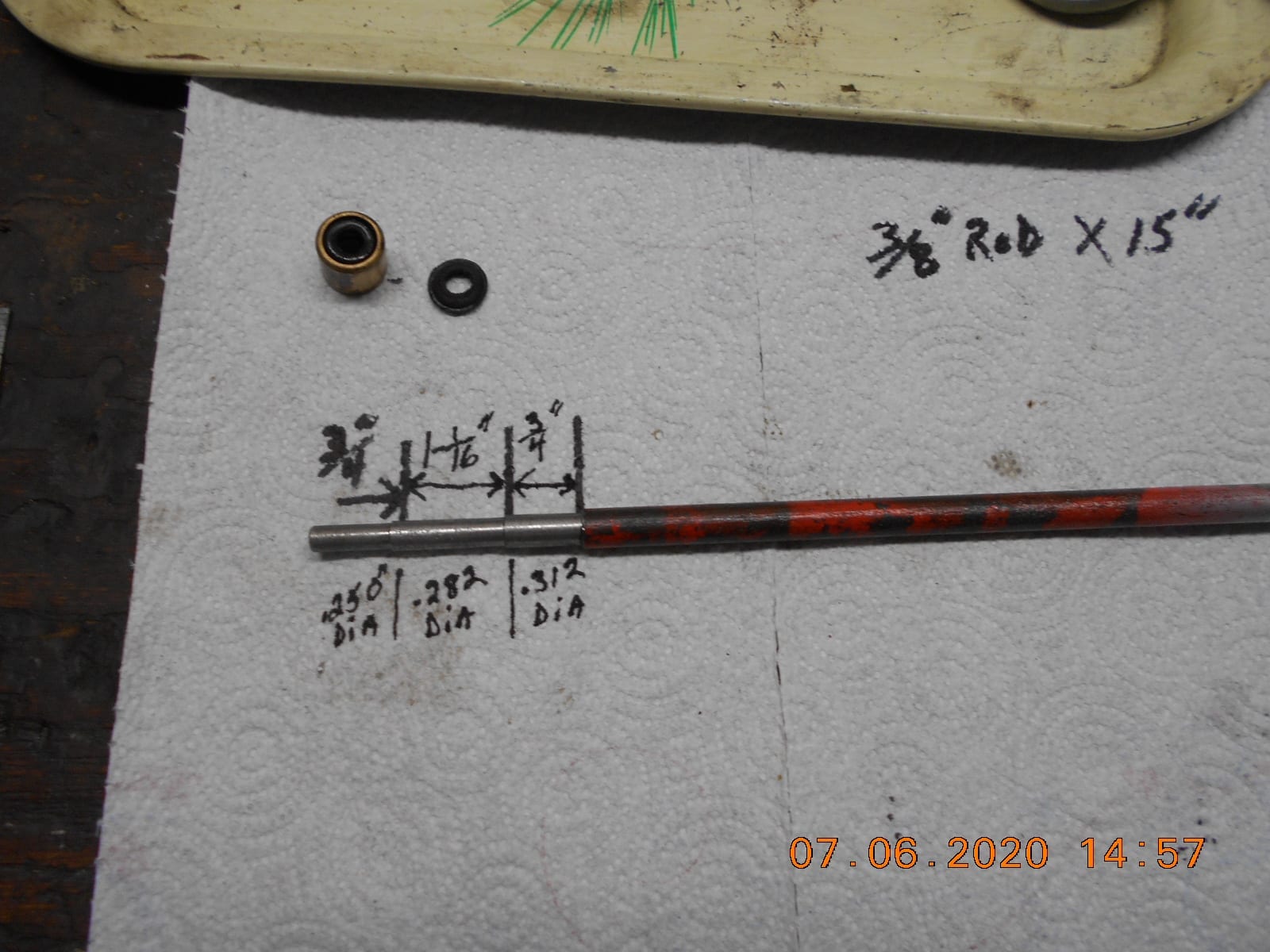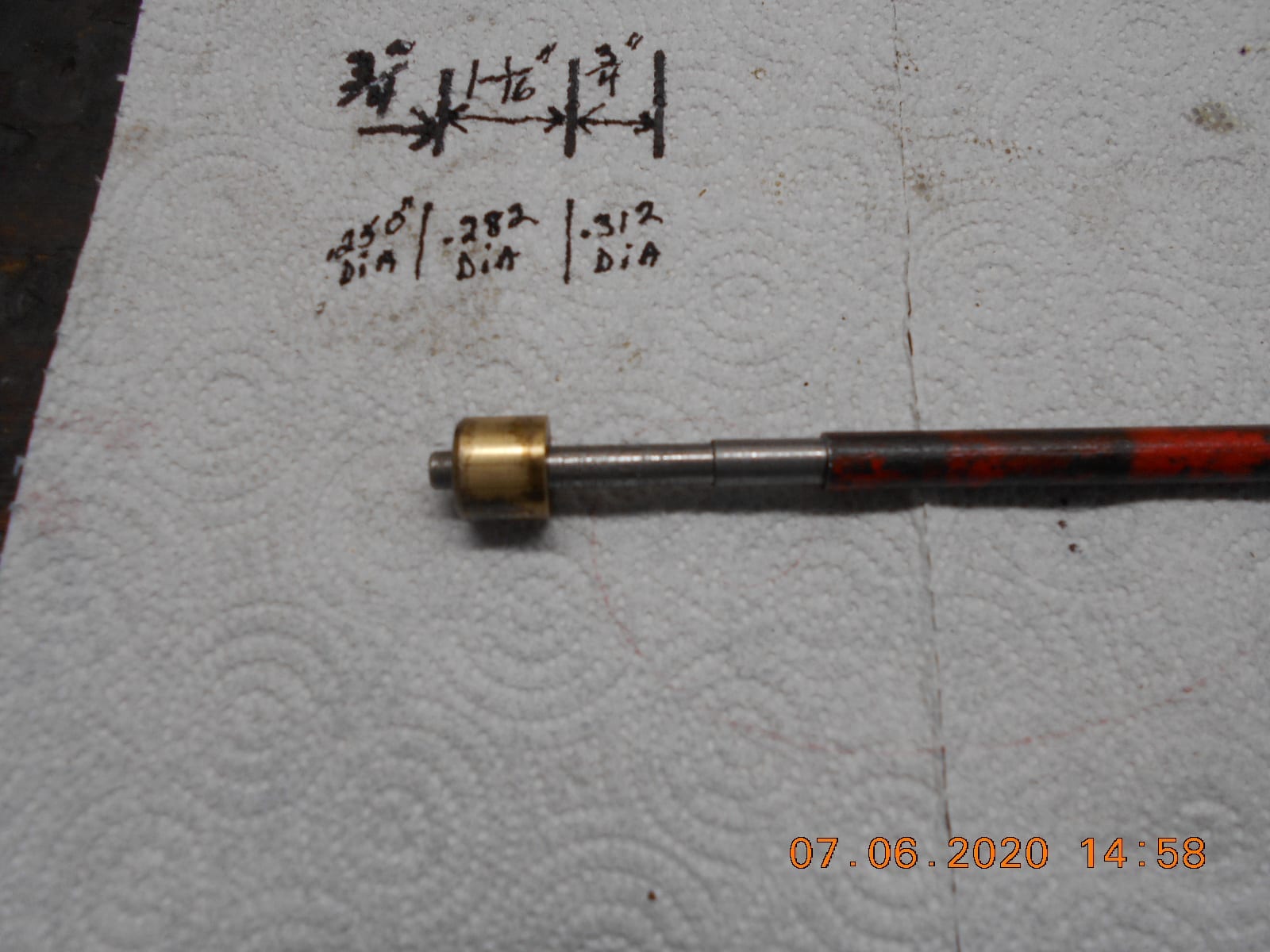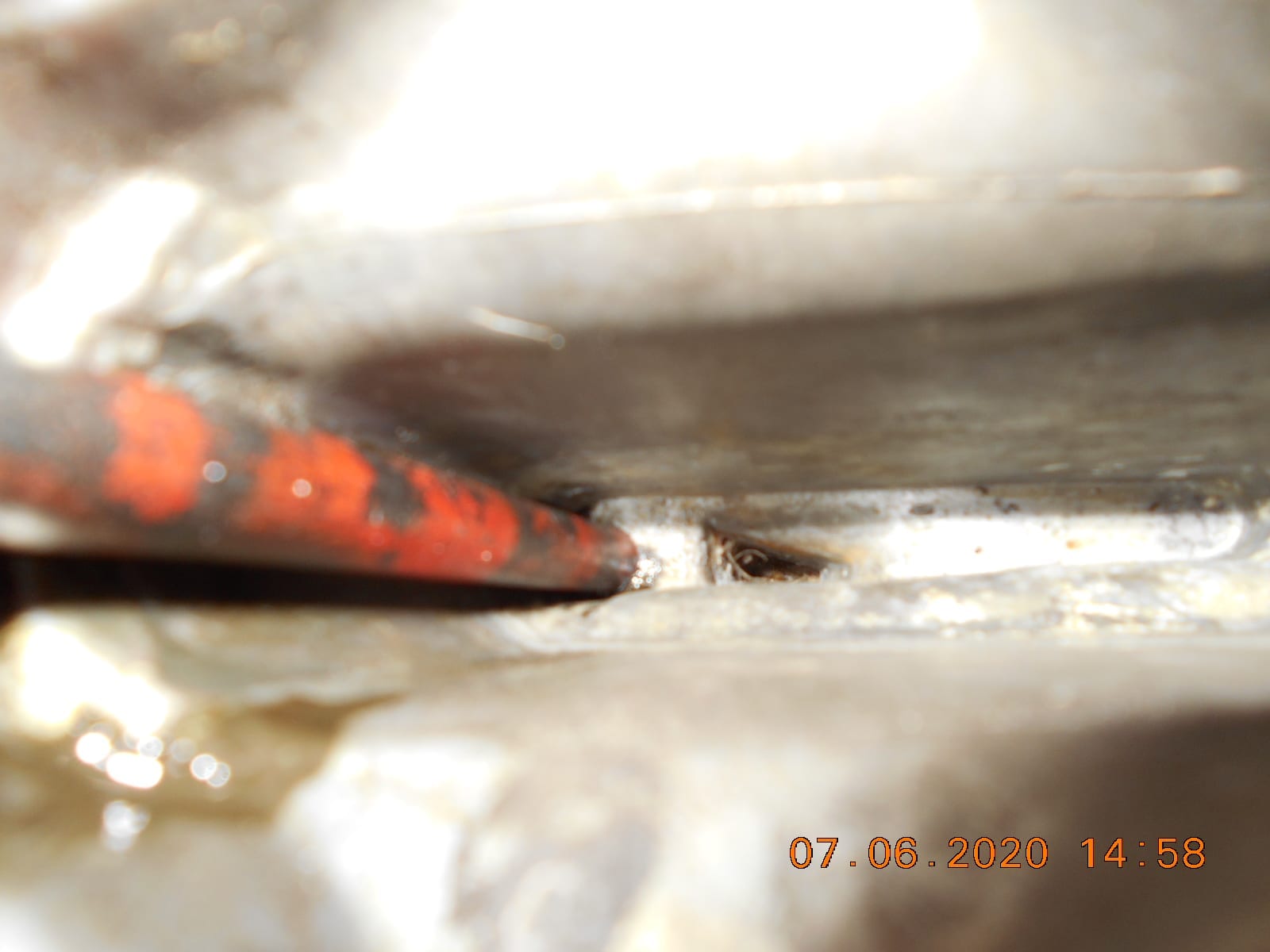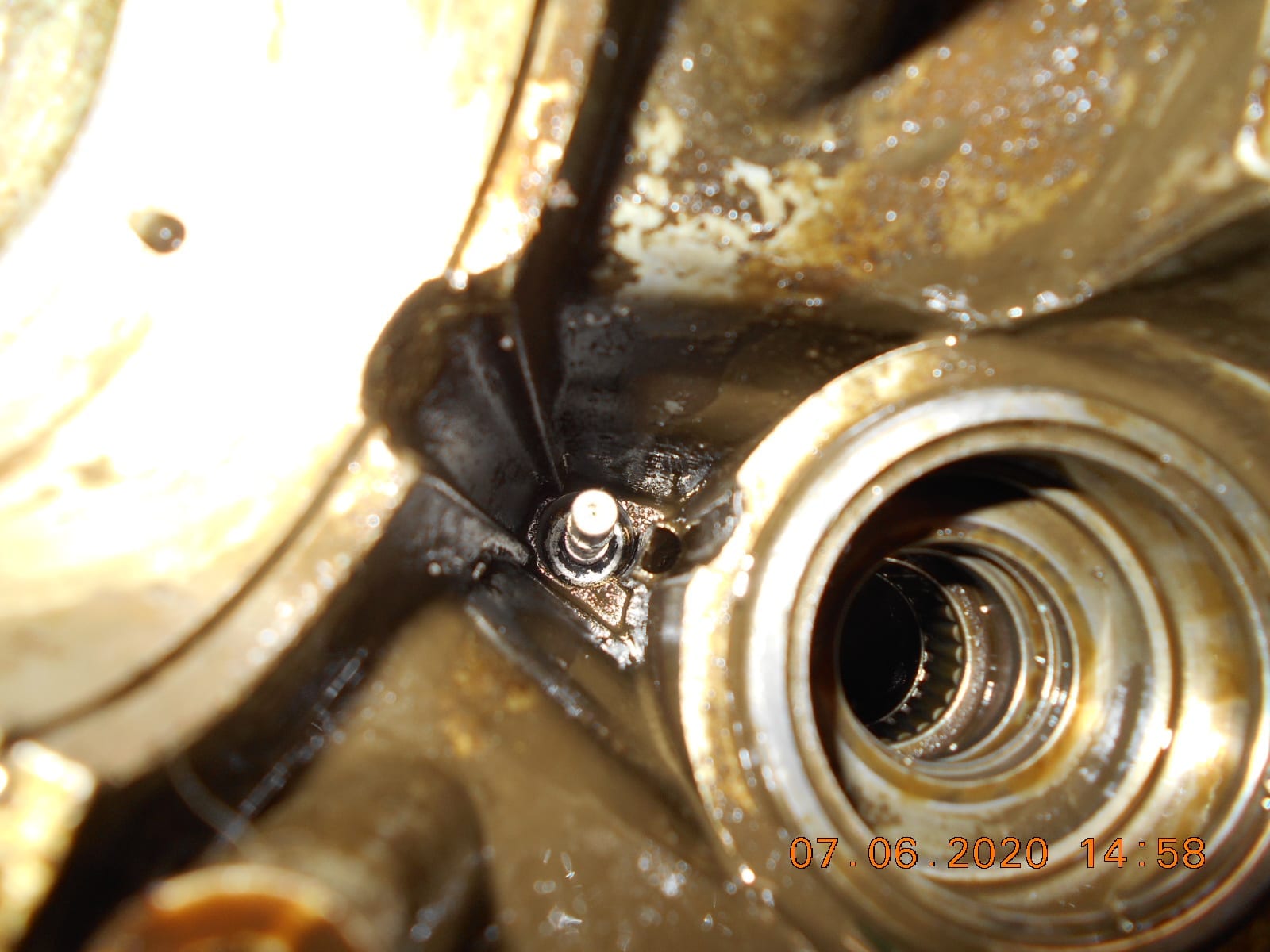Home › Forum › Ask A Member › Shift rod seal RD
- This topic has 13 replies, 9 voices, and was last updated 5 years, 3 months ago by
 Buccaneer.
Buccaneer.
-
AuthorPosts
-
July 4, 2020 at 2:35 pm #207655
I’ve looked in the 10th edition Johnson service manual, you-tube and searched this site but still have some questions. Searching this site for ” shift rod ” I have seen just three threads, two of which mention a link from Frank showing replacement procedure. The link dies with the dreaded “404 not found” I’m sure this is because Frank is out of the tool business. I see there were special tools or generic tools or you can make your own.
Frank can you repost the replacement procedure?
I assume you push it out from the gear side coming out the pump side
The parts diagram shows the o-ring above the bushing, is that backwards?
What prevents squashing the o-ring when reinstalling the bushing?
Is a install tool needed or do you just hammer the bushing back flush with top of gearcase?
Can the bushing be reused or must it be replaced each time?July 4, 2020 at 6:55 pm #207694I had the procedure on my special tools website. but Richard White took over that business and my website is gone.
Anyhoo, long story made long, the special tool (OEM or mine) made for the job didn’t work worth a hoot, and that’s why I quit making them. Best way is run a 5/16″ tap into the bushing just a few turns. Some bushings go in from the top, some from the bottom. In either case, run the tap into the end of the bushing that you can see. Screw a bolt into the threads you just made. Now flip the gearcase over and stick a 1/4″ rod through the bushing so it bangs up against the bolt. A few hammer taps and the bolt and bushing come out. You can reuse the bushing if you didn’t tap it too deep.
There are two types of bushings. Some are driven in all the way and bottom out on a gasket. Those are a no-brainer. The other kind doesn’t use a gasket and if you drive it in all the way you will mash the o-ring and you won’t be able to get the shift rod in. Hopefully, you looked at it before removing it to see how far it is driven in.
Hope this helps.
July 4, 2020 at 8:49 pm #207716I’ve used Franks procedure several times, It works well once I had the right combination of adapters on the end of the tap so I could turn it with the wrench end of the tap recessed down in the housing. I have had good results re-using the tapped bushing.
DaveJuly 5, 2020 at 11:20 am #207773Frank, thanks for responding as I really wanted to hear the “Frank way”
I feel more comfortable now after finding a lot more info using google.
Searching with google “AOMCI shift rod” displays more than this sites search feature.July 5, 2020 at 11:50 am #207778After the seal & brass bushing are starting to go in, I installed the shift rod with plenty of heavy grease use a small brass drift & tap the bushing down from side to sside & checking friction of shaft a guy can get real close to a good seat hugging the o-ring with a little compression & super seat on the o-ring. Don’t pull the shift shaft out again as it takes a little rubber every time.
July 5, 2020 at 12:21 pm #207783After the seal & brass bushing are starting to go in, I installed the shift rod with plenty of heavy grease use a small brass drift & tap the bushing down from side to sside & checking friction of shaft a guy can get real close to a good seat hugging the o-ring with a little compression & super seat on the o-ring. Don’t pull the shift shaft out again as it takes a little rubber every time.
Good point Jeff, I always worry about damaging the oring when shoving the shift rod through it…
July 6, 2020 at 5:46 pm #207933When the subject came up a couple of days ago about the “OMC shift rod o-ring removal tool”
I looked in my files for “specs” for said tool, but did not find that I saved them, or more likely,
it’s hiding somewhere. Anyway, I used the too today that l I made from specs on this web site, or perhaps
Franks a few years ago. Therefore I took some measurements as long as I had to tool out.I’ve used the tool probably six times is all, as I’m usually working on older motors, and it’s never
failed me to knock out the brass plug speedily, with the shift rod o-ring inside. Some times the
plug sticks on the rod after knocked the housing, but jerking if up a few times pops it off.I’m not sure if the original measurements for the tool I seen included the length of each “step” in the
rod, or just the diameter of each step, but I remember tweaking the steps longer on the lathe, as
the first time I went to use the tool it wouldn’t knock the brass plug all the way out of it’s bore in the
housing.I can understand Frank’s frustration in making the tool and having it not work for everybody,
but if you have a lathe, I’d say go for it!Prepare to be boarded!
July 6, 2020 at 11:04 pm #207967Buc, I made the same tool! It also aids in assembly. Put the brass bushing on the tool slip the new O ring on with a little grease on the parts, to hold them on, and installation goes much easier!
Can’t please everybody but this tool is a must have for me. I do not like taping out the bushing but that is my opinion.dale
July 6, 2020 at 11:59 pm #207968This group provides endless valuable information for guys that are learning to keep these old engines alive. I have a pretty well set up shop and this tool can be made in short order and with (5) 50’s model engines coming up I will surely find a place to use it. I may likely try both methods. Just glad to have landed here.. great people and knowledge.
I got a few I have had a long time but can always use a few more going into retirement.
July 16, 2020 at 10:24 pm #208848Ok, I think I’m doing this correctly but it doesn’t seem like it working so I figure I’ll tap into the knowledge base instead of maybe breaking something. The pictures below show the bushing tapped from the bottom of the lower unit. The next picture shows the bolt screwed into the tapped threads from the bottom of the lower unit. The last picture shows the bolt viewing from the top of the lower unit (where I’m hitting it with a long 1/4″ bolt). So I’ve rapped it pretty firmly about 30 times now and I don’t see any progress.
So, first am I doing this right, and if so, do I need to hit it really hard, or just firmly a whole lot.
-
AuthorPosts
- You must be logged in to reply to this topic.


